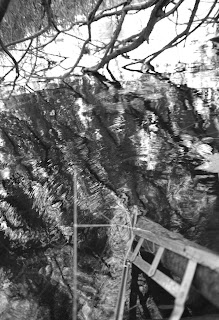




How to use architectural concepts of space to understand personal interaction with the environment?


 Art machines-Machine Art
Art machines-Machine Art





Lebbeus Woods is one of the first architects I knew by name – not Frank Lloyd Wright or Mies van der Rohe, but Lebbeus Woods – and it was Woods's own technically baroque sketches and models, of buildings that could very well be machines (and vice versa), that gave me an early glimpse of what architecture could really be about.
Woods's work is the exclamation point at the end of a sentence proclaiming that the architectural imagination, freed from constraints of finance and buildability, should be uncompromising, always. One should imagine entirely new structures, spaces without walls, radically reconstructing the outermost possibilities of the built environment.
If need be, we should re-think the very planet we stand on.




 Drawing the trace of installation in forest:
Drawing the trace of installation in forest:

 Drawing the trace of installation in swamp:
Drawing the trace of installation in swamp:



Swamp: X+Y plan, X= distance, Y= deep
Forest: X+Z elevation, X+Z, X=distance, Z=wide/range
Cliff: Y+Z section, Y= height , Z=wide
Therefore, setting the calibration and coordinate into the drawing and recorded the movement of installation that I how to use the device for the site plan and draw the trace of device in order to survey which place is better for picnic.
In three drawings show the relationship of traces in three environments.










These inne characteristics communicate with their sites.
For instance,in the forest,standing the opposite bank to look the forest, some parts of forest become an inverted reflection in the water. Because of water line, I use a horizontal position to put the nine characteristics into there.Some of them are revealed and concealed.For example,"F" is a puzzle frame to change a measure of stick to become the coordinate axis. Because sunlight through the forest, it produces the shadow and the shadow shred the shape of trees.That "C" is happened in the forest.
Notation of nine characteristucs:


One+ = A: juxtapose-put things together, especially things that are not normally together, in order to compare them or to make something new.
Two+ = B: Because of changing proportion and scale, the image is constrained of measure.
Three+= C: Shredding the image and mirror and extending it.
Four+= D: Plaited resembled pictures-strip it and hybrid it.
Five+ = E:pleat and folding, the image is revealed or concealed
Six+ = F: a sliding puzzle that consists of a frame of numbered square tiles in random order with one tile missing.- a puzzle frame is a coordinate axis for pictures.
Seven+=G: Excerpt and addition on an existing strip and reframed it.
Eight+= H: One object exist the similar spaces ,however, effect of events are different owing to locatin on different environment.
Nine+= I: Using different objects to describe the effect of events